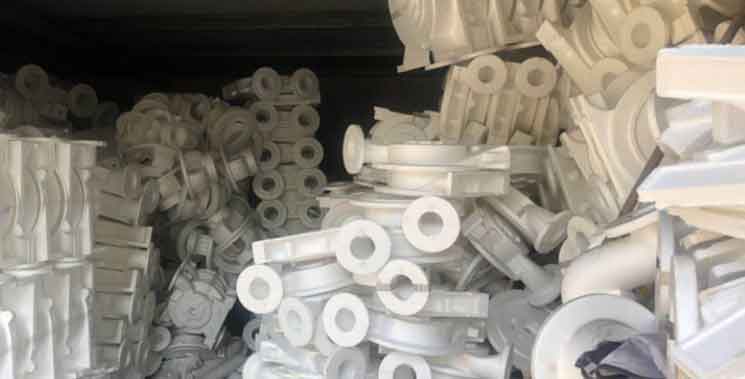Lost foam casting is a complex and intricate process used to create metal parts and components. It is a casting technique that involves the use of a foam pattern that is coated with refractory material and then vaporized or “lost” during the casting process. This technique allows for the production of intricate and detailed metal parts with high precision.

Here is a step-by-step explanation of the lost foam casting process:
- Pattern Creation: The process begins with the creation of a foam pattern that represents the desired shape of the final metal part. The foam pattern can be produced using various methods, including machining, 3D printing, or molding.
- Pattern Assembly: Multiple foam patterns may be combined and attached to create a larger and more complex pattern, depending on the requirements of the final part.
- Pattern Coating: The foam pattern or pattern assembly is coated with a refractory material, usually a ceramic slurry. This coating serves as the mold for the molten metal and helps to maintain the shape and details of the pattern during the casting process.
- Drying: After the pattern is coated, it is allowed to dry. This helps the ceramic coating to harden and prepare it for the next steps.
- Flask Preparation: A flask, which is a rigid container, is prepared to hold the coated foam pattern. The flask is typically made of a material like metal or sand and is divided into two halves to facilitate the casting process.
- Pattern Placement: The coated foam pattern or pattern assembly is placed into one half of the flask. It is positioned carefully to ensure proper alignment and orientation.
- Sand Filling: The other half of the flask is filled with a special type of unbonded sand called dry sand. This sand is poured around the foam pattern, completely covering it.
- Compactability: The sand is compacted around the foam pattern to provide support and maintain its shape during the casting process. Various methods can be used for compacting the sand, such as vibration, jolting, or mechanical compaction.
- Pouring Basin and Risers: Channels and gates are created in the sand to allow the molten metal to flow into the mold. A pouring basin and risers, which are additional reservoirs of molten metal, are also added to ensure a continuous flow and compensate for any shrinkage during solidification.
- Metal Pouring: Once the mold is fully prepared, it is placed in a casting pit or similar setup. Molten metal, typically aluminum or other non-ferrous alloys, is poured into the pouring basin, allowing it to flow through the channels and fill the mold.
- Solidification: The poured metal fills the cavity left by the vaporized foam pattern and begins to solidify. The metal cools and takes the shape of the mold, capturing all the intricate details of the original pattern.
- Shakeout: After the metal has solidified and cooled, the sand mold is broken apart to reveal the solid metal part inside. The metal part may require additional cleaning and finishing processes, such as grinding or shot blasting, to remove any remaining sand or imperfections.
The lost foam casting process offers several advantages, including the ability to produce complex geometries, eliminate the need for parting lines or draft angles, and reduce machining requirements. However, it also requires careful attention to detail and precise control over various parameters to ensure successful casting outcomes.
